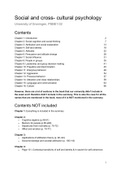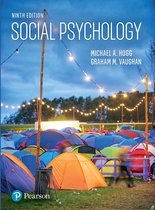Summary
Summary Social and cross-cultural psychology ; Chapters 1 through 16
- Course
- Institution
- Book
This summary includes every chapter of the book social psychology from Hogg and Vaughan, the 9th edition. As mentioned on the first page, a number of sections are not included as they were not important for my exam. The summary can be used to study the entire content, however, I do recommend re...
[Show more]




